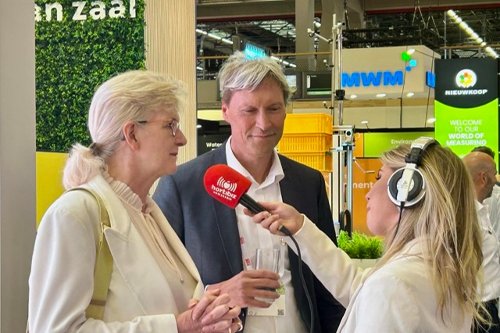Lapietra fine-tunes crop performance thanks to Plant Empowerment
Added on 23 December 2024

Lapietra has a total of 14 ha of greenhouse space – 11.5 ha of tomato production and 2.5 ha for cucumbers – and employs over a hundred people. “Everything is grown hydroponically,” says Paolo. “Our cucumber production activities are mainly focused on mini cucumbers of 11-13cm in length, for the local market. Besides that, we produce lots of different types of tomatoes, from truss tomatoes to green tomatoes and even a black cocktail tomato called ‘Nero’. We have one semi-closed greenhouse fitted with LEDs, which enables us to continue growing some smaller tomato types all through the winter.”
Keeping the balance
Paolo has been growing vegetables and stone fruits for a long time; he already had 8 years of experience under his belt before he joined Lapietra back in 2010. “Over the years, especially in combination with the rise of automation, I’ve become increasingly interested in the data science behind good crop management,” he states.
After reading about the Plant Empowerment book on LinkedIn a few years ago, he bought it right away and started implementing some of the principles. “To be honest, I was surprised to see that the plants quickly adapted to the new levels of inputs, and the approach really did improve production. Clearly, keeping the crops better in balance is good for plant health, and healthy plants mean better flavour, more uniform quality and higher yields,” he continues.
Exchanging knowledge
Lapietra’s facility is located close to the Adriatic coast, so the climate is not too dry and the temperatures are generally moderate. “In summer, however, the night-time temperature can sometimes remain high, and the weather conditions can also be wet. This can cause some humidity challenges in our greenhouses,” explains Paolo. In particular, these conditions were causing some setting difficulties with the tomatoes in the summer plantings. For expert advice, Paolo contacted Alessandro Montanarella, his crop consultant and local representative of Lapietra’s substrate supplier Saint-Gobain Cultilene.
More news















